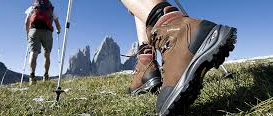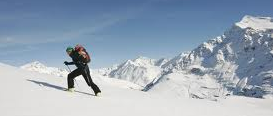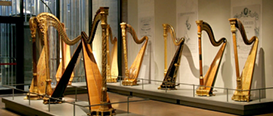
Summer sports

Winter sports

Made in Monviso
Municipalities
MUSEUMS
BELLINO
Museum of Time and Sundials
The museum offers a key to the sundials that are painted on houses or religious buildings all over the municipality. Interesting are the photo panels that suggest an ancient concept of time. Documents and tools used by the gnomon makers of Bellino can be seen as well as a film of a whole day’s duration…
Info: located in hamlet Celle, in the building of the former elementary school. Admission fee.
Tel. +39 0175/95.110 (Town hall), info@comune.bellino.cn.it, www.comune.bellino.cn.it.
Astronomical observatory
The astronomical observatory, owned by the municipality and managed by the Association Astrofili della Bisalta, is equipped with a professional Schmidt Cassegrain Celestron C14 telescope. With this instrument and its numerous accessories it is possible to make both visual observations aimed at enthusiasts who are always present during public openings, and professional shots of galaxies, nebulae, clusters and any other object in the sky. During the day it is also possible to use the Lunt LS035THa solar telescope, ideal for observing and photographing our star in total safety.
Located in hamlet Celle. Admission fee. Open on specific dates (see the calendar on the Municipality website) or by reservation for groups.
Info: Municipality of Bellino, tel. +39 0175/95.110, info@comune.bellino.cn.it, www.comune.bellino.cn.it.
BROSSASCO
Museum of wood
A rich collection of woodworking pieces including the sculptor’s counter by Pietro Masera, master sculptor who worked at the Bertoni company in Saluzzo.
Open on the 1st and 3rd Sunday of the month, from 9-12. P.za della Libertà. Free entrance.
Info and visits: tel. +39 347/1896405 (Eugenio); +39 348/7631657 (Giovanni); +39 0175/68260 (Mariangela); +39 329/0074106 (Quinto); +39 339/7790753 (Renzo) – farmaciaroggero@libero.it
CASTELDELFINO
Documentation centre on folk religiousness
The centre, which is also used for meetings, concerts and events is housed in the ancient Romanesque chapel of Saint Eusebius, the only building that survived the flood that destroyed the old Villa S. Eusebio at the end of the 14th century. Permanent exhibition: The people’s Saints.
Info: Chapel of St. Eusebius. Free entrance.
Comunità Montana Valli del Monviso, Tel. +39 0175/970640, info@vallevaraita.cn.it.
Alevé visitors’ centre
The visitors’ centre of Casteldelfino reproduces a part of the Alevè Forest at a natural scale in a big, open, accessible diorama. The itinerary follows a trail, accurately reproduced on canvas, which enters in the stone pine forest, passing a rock face, typical of the higher areas of the forest. Between the trees, in this magnificent setting, an eagle owl grips its prey with its talons. In the second part of the installation the trail guides the stunned visitor between Lake Bagnour, with a watering doe, and a slope populated with marmots. In the faithfully reproduced underbrush, some of the typical animals of the Alevè appear, wild boars and hares, while at the edges there is a group of black grouse. Between the rocks the Alpine fauna finds its environment.
Info: Via Roma. Free entrance.
The museum is managed by the Parco del Monviso, Saluzzo, Tel. +39 0175/46.505, info@parcomonviso.eu, www.parcodelpocn.it
Ethnographical Museum
Working tools; reconstruction of an ancient kitchen, façade of a house; portal of the parish church; bobbins; traditional costumes.
Info: District Casermette, the museum is run by the Associazione culturale Ier a la Vilo, Tel. +39 0175/95.126 (municipality); +39 0175/95.242; mobile +39333/18.61.331. Free entrance.
COSTIGLIOLE SALUZZO
Palazzo Sarriod de La Tour
The palace Sarriod de La Tour houses the public library and the tourist office (seasonal opening). Reccently restored, the building was commissioned in 1720 by Tommaso Alberto Saluzzo di Casteldelfino and is named after a Tommaso Alberto’s descendant, Luis Antoine Hiacinte Sarriod de La Tour.
Info: Via Vittorio Veneto, 103, (+39) 0175/239116 -cell. 333/4062819
Ethnographical museum ‘L Palas,
More than six thousand working tools, in particular for the cultivation of vines and the production of wine, are collected in this 18th-century manor; a reconstruction of an ancient kitchen and a living room are also present.
Info: Azienda Agricola Chiotti Ambrogio, Via Ceretto 76, Costigliole Saluzzo, tel. +39 0175/230.825, info@chiotti.it, www.chiotti.it. Free entrance.
FRASSINO
Stonemasons’ museum Lhi Mestres
Documentation centre on the work of local stonemasons and on the architecture of this part of the valley. Farming was not cost-effecting in the area of Frassino, so local people developed different skills and job opportunities. Some people became stonemasons in the village and also abroad, especially in Paris, where a lot of people from Frassino emigrated since the 19th century. This job was so widespread and important for the village that the municipality has created a cultural centre dedicated to this topic. It is not a collection of working tools, but rather a documentation centre about local history, the evolution of building techniques and the buildings still visible on the territory. To know more, you can visit the hamlet Chiaronto, from where the majority of Frassino stonemasons came.
Info: Town Hall, via S. Rocco 4. Free entrance during office hours.
Tel. +39 0175/976926 (town hall), info@comune.frassino.cn.it, www.comune.frassino.cn.it
Museum L’Iero di Fredou di Pin Boubou
Housed in an old vaulted stable, this private collection displays working tools and traditions of mountain agriculture.
Info: Borgata Grande, tel. (+39)3409343347 . Open in summer, free entrance.
ISASCA
Alfabetulla
This new visitors’ centre, opened in 2012, is dedicated to trees, wood and its products. An itinerary to see, understand, learn, work and play with wood: from how a tree grows to wooden products. A curious journey to get to know this material from A to Z.
Info: Via Provinciale 13, Tel. +39 0175/567840 – Fax 0175/560.963 – info@alfabetulla.it, www.alfabetulla.it. Open on reservation from March to November. Admission fee.
PIASCO
Harp Museum Victor Salvi
This is the first and only museum in the world entirely dedicated to the harp.
CURRENT EXHIBITION: The evolution of the harp: the origins, Sébastien Erard, Victor Salvi.
On display is a series of “jewels”, selected with strict philological criteria to illustrate the development of the harp in the world from antiquity. The focus is on the creative genius of Sébastien Erard and Victor Salvi: the former as the inventor of the double movement that revolutionized how the harp is played, the latter as his worthy heir in his capacity to anticipate and interpret the evolution of the instrument, combining handicraft passion and a drive for research.
Info: V. Rossana 7, tel. 0175/270.510, info@museodellarpavictorsalvi.it
www.museodellarpavictorsalvi.it
PONTECHIANALE
Liero d’armoni
On display a rich collection of old instruments played in Occitan music, mostly dating back to the end of the 19th century (diatonic accordeons, hurdy-gurdies, winds). The museum organizes events, conferences, contests.
Open at the weekend in July and September, every day in August, during Christmas holidays. Free entrance. Events and conferences from mid-July to the end of September 2016.
Info: Frazione Chianale 109, Sig. Celeste Ruà, tel. 348/7125650 – lierodarmoni@gmail.com
www.facebook.com/lierodarmoni
Museum of traditional costume and textile handicraft
It is housed in the prestigious rooms of the former Capuchin mission of Chianale, built in the 17th and 18th centuries and recently restored.
The collections on show display above all women’s costumes of the valley, paying particular attention to the upper Varaita valley. Here the dress, among the richest of Western Alps, was the product of various skills, such as the lace-pillow art, the horsehair manufacture, the use of special looms to create ribbons.
Visitors will be struck by the vivid shades of babies’ caps, aprons and bibs, handkerchiefs, ribbons… In fact the holiday costume was rich in bright colours, whereas everyday clothes were restrained and unadorned.
You can discover further details of this mountain life in a large mezzanine dedicated to canvas, linsey-woolsey and drap, ordinary materials of everyday life.
Info: Comitato per S. Lorenzo Fraz. Chianale 120, Pontechianale, sig.ra Cortona Silvana, tel +39 347/8999198 – info@museodelcostumechianale.it, www.museodelcostumechianale.it
Museum of furniture of the upper Varaita valley
The museum, established by private citizens with the support of the Comunità montana, is housed in a typical old alpine house. Currently the exhibitions are set up only in the upper part of the building, which belonged to a branch of the Pons family, a surname recorded in the upper valley since the 14th century.
The exhibition, set up by Celeste Ruà, Paolo Infossi, Maria Antonietta Ruffa and Enrica Paseri with the support of the Municipality of Pontechianale, displays the different styles and decorative motifs used for the typical trunks and other traditional pieces of furniture made in the upper Varaita valley through the last four centuries.
The museum is open in August, in other months visits are possible on reservation. Contemporary art exhibitions are held during the summer.
Info: hamlet Castello, Tel. +39 348 7125650 or +39 349 1466050
ROSSANA
Eco-museum of the Resistance
The museum has found its location in a lovely village, where the surrounding mountains were witnesses during the 2nd World War of the continuous actions of the partisans and the cruel raids of the Nazi-Fascists . The latter, with their inhumane undertakings, caused dramatic episodes for the Resistance fighters. The civil population was forced to endure violence, deprivation and serious material damages because of the brutality of the German invaders and the ignominious deeds of the Italian fascists. Since the first days after the armistice of September 8th, 1943, the Varaita Valley witnessed the forming of groups of young volunteers, who instead of reinforcing the ranks of the fascist government of Salò, preferred to go into the mountains and take up the armed fight to bring freedom and democracy to Italy.
Those who would like to get a more profound knowledge of the most important episodes of the long months of fight, may ask to be accompanied to the most characteristic places of the Resistance in the valley.
Open from spring to late autumn, furthermore it is possible to organize school visits in the months of September, October, November, April and May. Free entrance.
Info: Grossa village – district Lemma, Tel. +39 011.9610601 – +39 0175. 64453 – +39 333 949 1445, riassom@alice.it, www.anpi.it
SAMPEYRE
Ethnographical museum
In about ten rooms the museum houses tools for agricultural work, bakery and wool manufacturing; a reconstruction of an old classroom with benches and blackboard; the workshops of a blacksmith, a carpenter and a farrier as well as traditional costumes, old photos and a collection of models showing the characters of the Baia and the authentic flags of the four Baie of Sampeyre.
During summer exhibitions, meetings, courses and activities are organized; for further information see the “events” page.
Info: Via Roma 27, Tel. +39 0175/977148 (Town hall) or +39 0175/970022 – info@etnomuseosampeyre.it – www.etnomuseosampeyre.it. Free entrance
VENASCA
The Factory of Sounds
This is the first Italian theme-park entirely dedicated to sound and music; an itinerary to discover sound and noise through velocity, pitch, intensity and timbre. Here you can experiment sound vibration and acoustic wave propagation in space and get to know music instruments from all over the world.
Info: via Marconi, 15, Tel. +39 0175/567840 – Fax 0175/560.963 – info@lafabbricadeisuoni.it –
www.lafabbricadeisuoni.it. Admission fee.
VERZUOLO
Centre of the network project “Trails of Freedom”
“Memory of the Alps” is a cross-border museum network dedicated to the alpine territory and its history. This network was created through a European project among Italy, France and Switzerland. In the province of Cuneo there are 43 signposted “Trails of freedom” that retrace the places of racial persecutions, the 2nd world War and the Resistance fight, to recall the most important events and highlight their historical value.
The project aims to study and pass on to the new generations the collective memory regarding the alpine territory in France, Italy and Switzerland.
The centre organizes meetings and activities and it offers informative materials about the 43 trails and the thoughts, projects and feelings of the people who took part to those historical events.
Info: Biblioteca civica (public library), Via Marconi 13, Tel. +39 0175/88390, e-mail verzuolo.biblioteca@libero.it, www.comune.verzuolo.cn.it. Admission free, open during opening hours of the adjacent library.
Drago museum
Probably built at the end of the 18th century, this palace, called Palazzo Drago, underwent several restoration works but it maintained its elegant structure. The name comes from the last owners, the Drago family, who sold the palace to the municipality of Verzuolo in 1873. For some time this was the seat of the Town Hall and the schools.
The museum displays objects that belonged to the family, donated by Mrs Graziana Colla Drago; there are toys, firearms and swords, various types of tools, small scales, thermometers, photos, sacred images… but also some interesting pieces of furniture such as the bath tub, the Liberty-style stove, fittings and paintings.
Info: Palazzo Drago, Via Marconi 13, Tel. +39 0175/88390. Admission free, open during opening hours of the adjacent library. When the library is closed please contact the town hall, tel. +39 0175/255111, www.comune.verzuolo.cn.it

